The Stratum of the Early Gray Ware
Again we are simply estimating in attributing the arrival of the Hissar II invaders to the second half of the third millennium, though the only definitive chronological clue is given by the total absence of iron objects even in the latest graves of Hissar III.
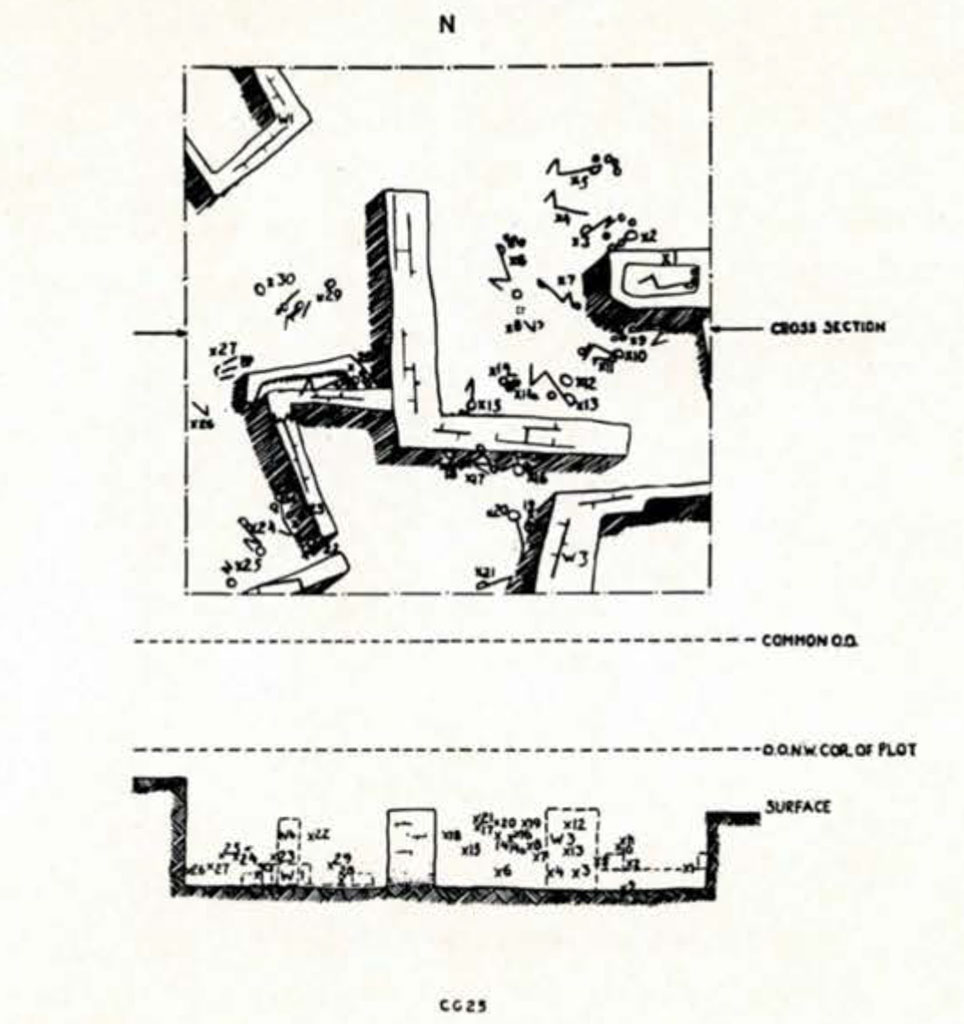
The question as to the origin of the newcomers is not yet solved; but after certain eliminations we can offer a fairly plausible theory. We do not believe they came from Anatolia where, approximately during this time, the change from red pottery (Alishar I) to painted wares (Alishar III) took place, while in addition a foreign people (Alishar II) with pronounced Mesopotamian culture features appeared on the scene. Neither are the Hissar II people a branch of the Mesopotamian culture tree, nor emigrants from the plains of Elam, nor from the mountains separating Iran and the Two River Land. Our clue points north. In Tureng Tepe near Asterabad, Dr. F. R. Wulsin7 uncovered in 1931 gray vessels, some identical with Hissar II and III pots, and many at least similar to them. As a rule, the vessels from Tureng Tepe are more elaborate and more lavishly decorated with burnished patterns than the Tepe Hissar pottery; but the two series of ceramics are decidedly related.
It is, therefore, our working theory, for the present, that the carriers of the Hissar II culture drifted south from Turkestan (which was not necessarily their center of diffusion) across the passes which at all times were the gates for invaders from the northern steppe.

Image Number: 83034
Settlement and Building Remains of Hissar II [Plate XCVI]
The horizontal extent of Stratum II is not yet known. It is present, apparently, on all pronounced elevations, buried there below Hissar III remains, while in depressions and on the Painted Pottery Flat it often forms a thin top layer on Stratum I.
As to the buildings, what has been said about the soundings of the earlier town is true also for our knowledge of Stratum II. It was defined in test squares, though the task of uncovering complete buildings was postponed until the following season. The walls show, faintly as a rule, the joints of large, rectangular, straw tempered, bricks (dimensions, for example, .57 x .305 x .09).

Image Number: 84847, 84871
Pottery Vessels of Stratum II [ Plates XCVII-CII]
The chronological difference between painted pottery and gray ware as a whole was rather clear before we even started excavating. The distinction between Strata II and III, however, based mainly on differences of the shapes of gray vessels and paralleled by some other distinctions, was not made until late in the first season. Furthermore, due to technical reasons, namely, the abundance of burials, we did not succeed in penetrating through Stratum III to Stratum II, thereby determining the time relations of the two culture layers by direct sectioning. We had to obtain these results by applying indirect methods and testing the deposits cropping out from below the main mound. Thus we succeeded in striking Stratum I at points where it reached close to the surface, and, finally, Stratum II under equal conditions, mainly in Plot CG 25 [Plate XCVI].
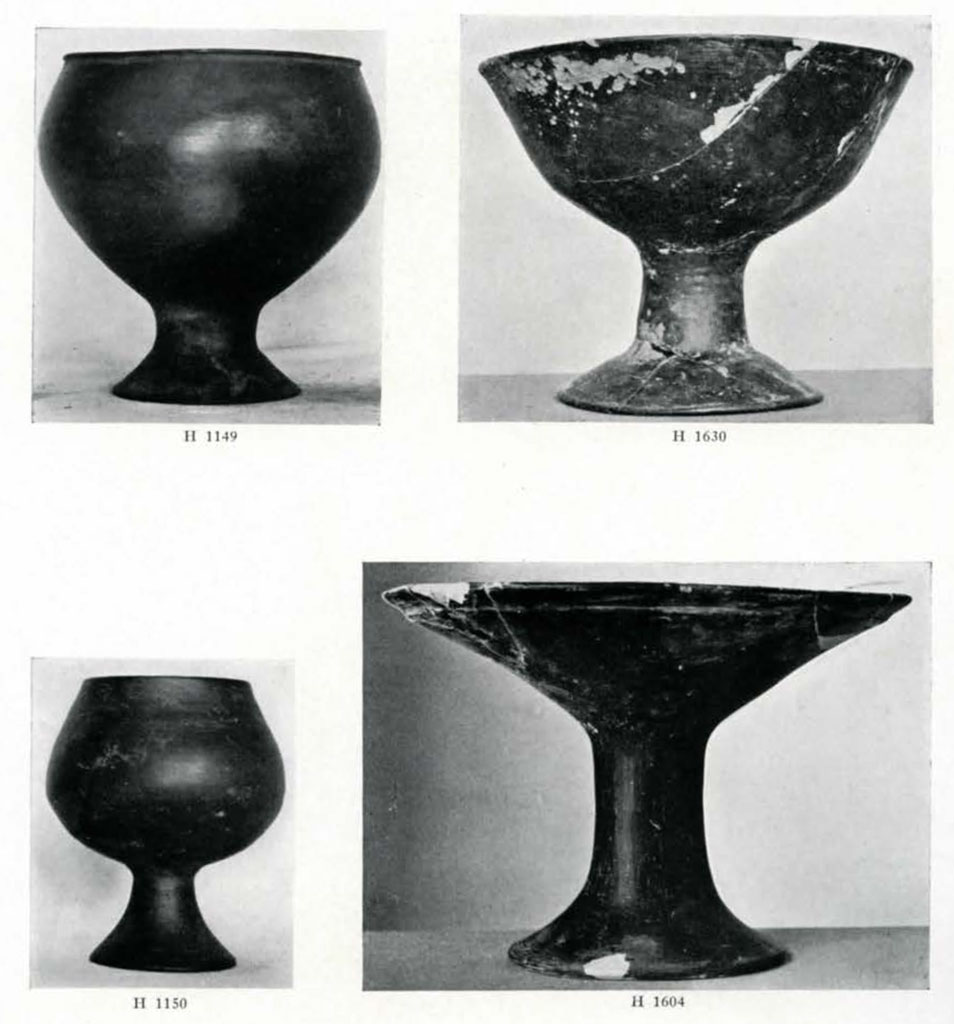
Image Number: 84634, 84648, 84854
The contents of the rather sterile rooms were of little help. The subdivision of the Gray Pottery Age was first based on the vessels deposited in the earliest graves of the new era. It was found that they contained great numbers of gray bowls, jars, and goblets with stem and foot, forms which were entirely absent in the extensive necropolis of Hissar III on the main mound. Two exceptions will be referred to in the chapter on Hissar III pottery. Re-checking of the burial gifts showed that in the first test plots identical stemmed vessels had been found in the lowermost graves of the gray pottery deposit.
If there was any proof wanting as to the earlier character of the graves with stemmed vessels, as compared with the burials on the main mound, painted vessels which occurred in several graves of the last Hissar I persons associated with the stemmed gray pots of the newcomers, dispersed all doubts.
At the present state of our knowledge we can consider only the gray bowls, jars, and goblets with stems and expanding bases as typical for Stratum II. As to technique, they show the same pronounced wheel marks as the Hissar I vessels, while, an almost inexplicable phenomenon, most of the later pots of Period III seem to have been modeled by hand.
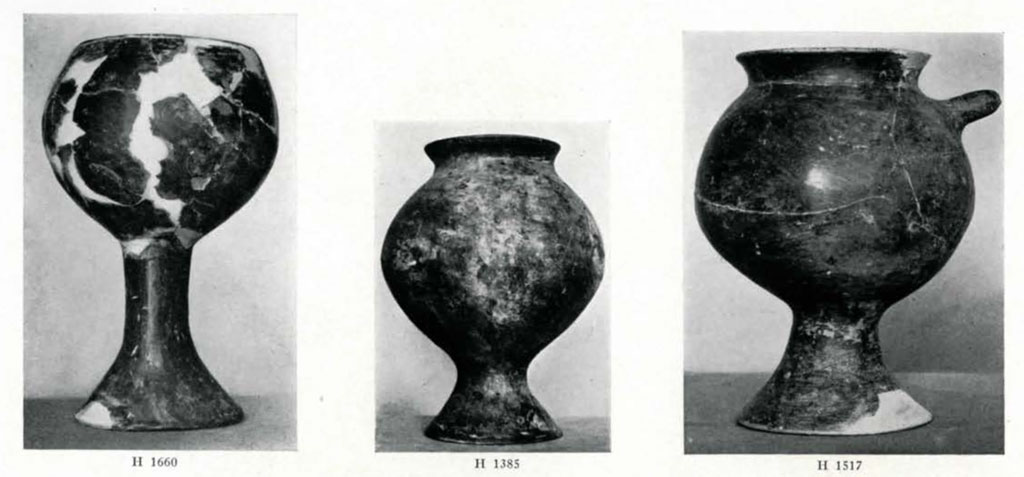
Image Number: 84830, 83217
It is a striking fact that the shapes of many Hissar II bowls and jars are absolutely identical with the forms of the preceding painted ware. We may see here the influence of the native woman adapting the old ware to the taste of the newcomers by preserving the form, seemingly not disagreeable to the foreigners, but dropping the decoration and changing the firing or the clay and thereby the ground color to a shade to which they were accustomed. This is a theory based on the fact that women usually were the pot makers before the era of industrialism. In ancient times the women of a conquered people were always considered spoils of victorious invaders, and, in turn, certainly influenced those handicrafts of the foreigners which belonged to their domain.
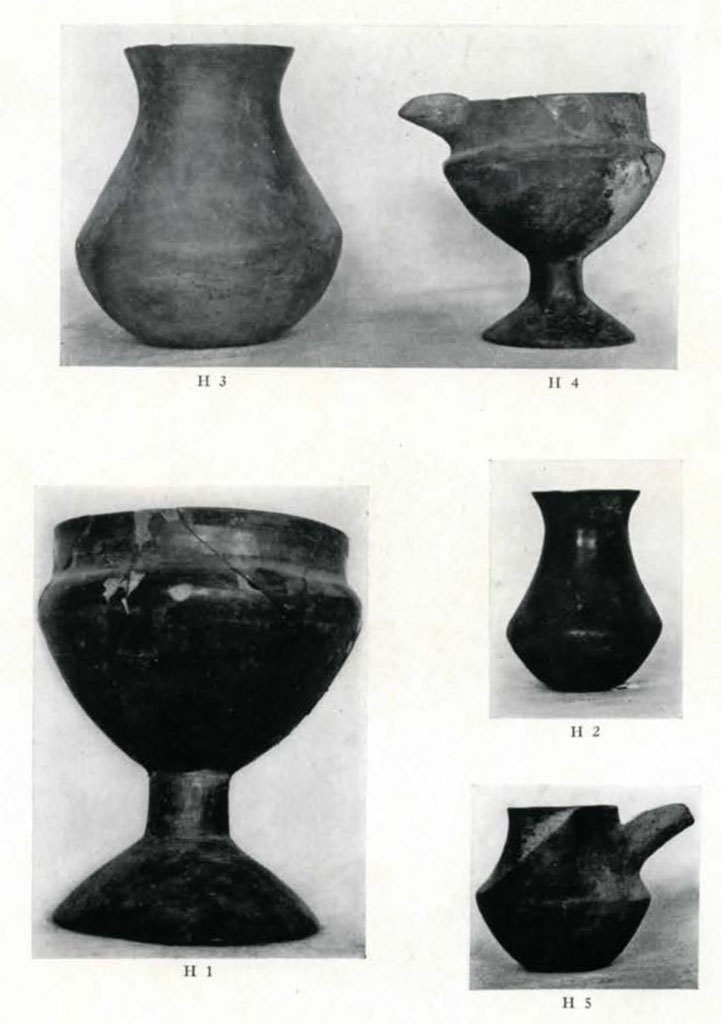
Image Numbers: 84548-84551
Again, the bowls and goblets with exaggerated tall stems do not appear in Stratum I. Series of small knobs, derived, doubtless, from repoussé work on metal vessels, are also newly introduced.
Many footless vessels resemble pots of Stratum III, or are actually identical. For this reason they cannot count as guide specimens, though certain varieties may still prove to have distinct features. Such types are cups, small jars, bowls and pitchers. They are plain gray, as a rule, but some have simple incised patterns. One bowl is corrugated and some small jars are supplied with bill spouts.
We will consider, finally, the important painted vessels [Plate CII] found in early Hissar II graves together with gray vessels and a few that occurred under similar conditions, attributing them likewise to that time. Burial x-1 in Plot CG 95 was supplied with a gray stemmed bowl lying beside Bowl H 1654, decorated with dark gray brown paired angles on a brown and buff shaded ground. Cup H 1655 lay beside and below the painted bowl. It is decorated with a dark brown pattern on buff brown ground. There are carelessly drawn elements which our mound idiom calls ‘browsing gazelles’ (compare H 1141, Hissar I pottery), interchanging with parallel angles. Cup H 1365, painted red brown on a light buff ground, shows apparently the last step of our conventionalized ‘standing gazelle’ design before it has been reduced to simple vertical lines, persisting then with the color shades of the specimen under consideration on the same or slightly modified cup form to the very end of Period III. The cup occurred as a single mortuary gift of x-6, Plot DH21. The burial was considerably above the floor of the last occupational level of Hissar I.
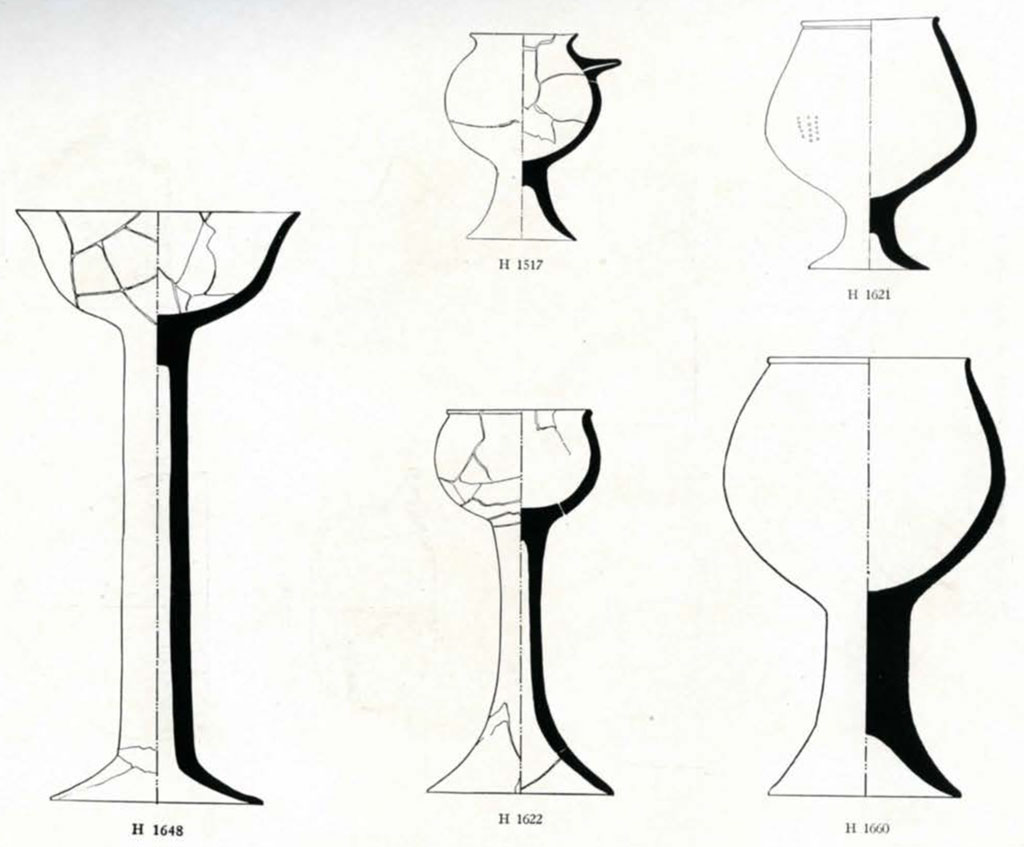
Cup H 1154, painted grayish brown on a lighter shade of the same color, has a ‘tongue’ pattern, frequently appearing on sherds from transitional Hissar I—II refuse. A small gray Hissar II jar stood partly inside the cup. Both were gifts of x-15 in Plot CG 25. There is one more cup (H 515) which we will consider in detail, because it represents a type extremely frequent in pure Hissar I burials. Its decoration consists of purplish red lines radiating on red brown ground from the pointed bottom to the lip. It occurred in a grave with plain (or abrazed) red pots and gray stemmed vessels. The little, spouted jar, H 1384, occurred close to a grave in the Hissar H burial layer, while jar H 1153 was again directly associated with Hissar II vessels in the same grave.

We find it necessary to give rather detailed descriptions of these vessels and their find conditions in order to convince the reader as we had to convince ourselves, that, first of all, Period I was succeeded by Period II without any lapse of time and that mutual absorption of certain ceramic features took place, doubtless paralleled by others, less tangible or more difficult to prove.
Metal Objects of Stratum II [Plates CIII-CV]Seals of Stratum II [Plate CVII]
During Period II the first copper seals appear at Tepe Hissar. The unusually large seal, H 1176, lay beside a skeleton with typical Hissar II pots and pins, while the second specimen illustrated was found ‘floating’ in the bottom refuse of the stratum. Both seals show the well known filled cross as a sealing pattern.
Hissar II Figurines [Plate CVI, C]
We found no outstanding pottery sculptures in the stratum under consideration. Human effigies are absent and the clay animals are represented by the same (often undefinable) bovine, ovine and canine figurines which occur in all strata of Tepe Hissar and in many other parts of the world.
Stone Objects of Stratum II [Plate CVI, A]
But for a muller of unusual discoid shape and a whetstone with lozenge-shaped cross section, we do not have to illustrate any of the stone objects of this stratum. There occurred the usual celts, chalcedony flakes, small globular stones, perhaps used as sling shots, further, polishing stones of various shapes and perforated disks.
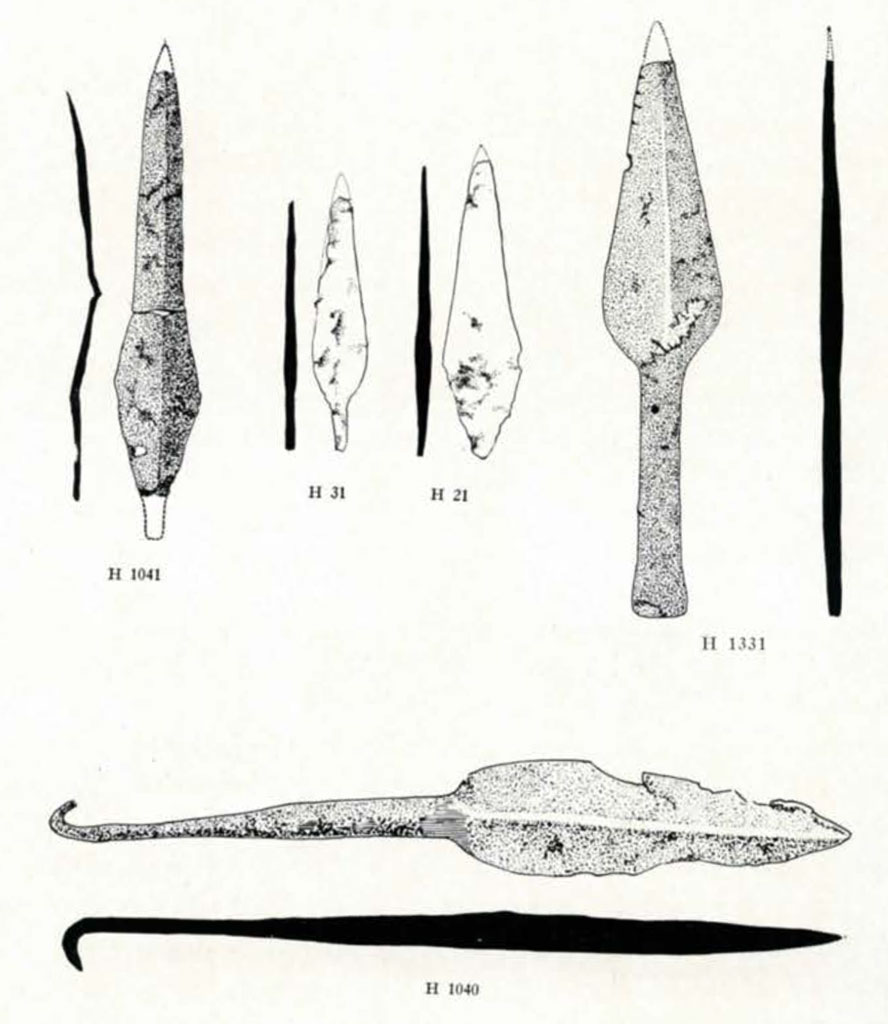
Whorls, Miscellaneous Clay and Bone Objects of Stratum II [Plate CVI, B]
There are few objects of these categories. We do not yet know whether the pottery disk or the roughly globular alabaster whorl are typical of the time. Slender clay cones occur in all strata, spool-shaped objects, such as found, are uncertain guides, and the bone awl illustrated is an omnipresent utensil.
Ornaments of Hissar II [Plates CVII and CVIII]
In addition to the bracelets, anklets and pendants of copper and, more seldom, of silver, the Hissar II people were covered almost as much as their predecessors with necklaces, armlets, bracelets, and pendants of the same materials mentioned in connection with Hissar I ornaments. The beautiful blue lapis lazuli has so far not been found prior to Period II. Its color matches attractively with the brown-red carnelian, the translucent mountain crystal, the white, sometimes iridescent frit, gypsum and alabaster. Some turquoise, serpentine, bitumen(?)and natural shells of olivella form were also wrought into Hissar II ornaments, the shapes of which remained about the same as those of the earlier types.
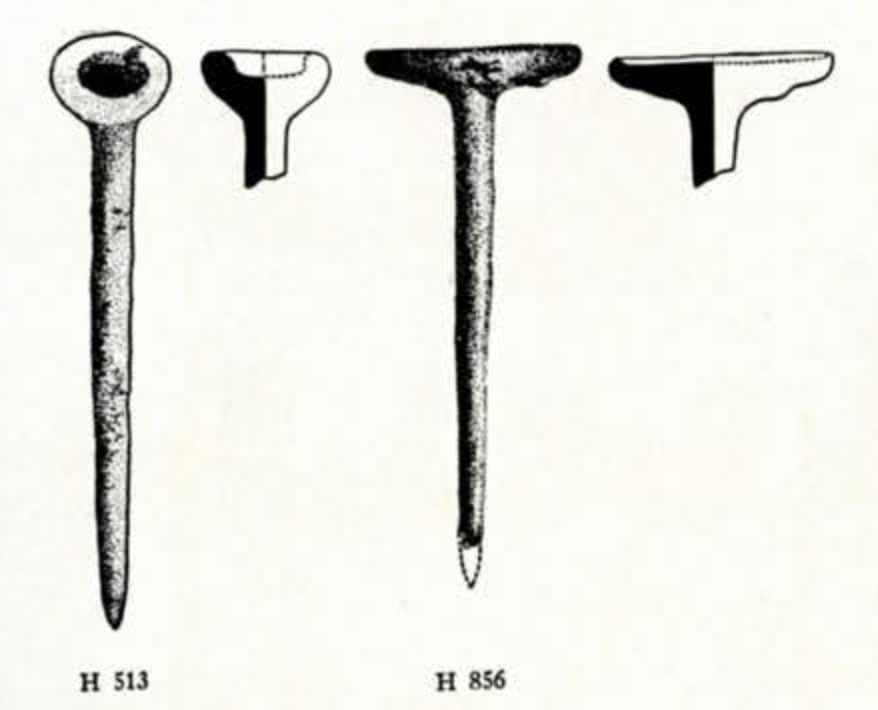
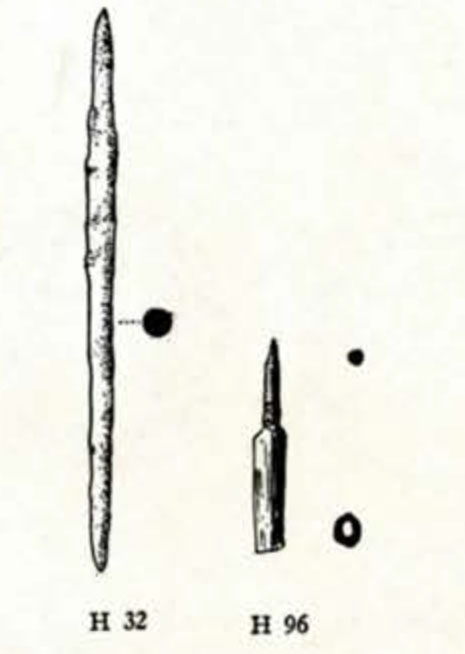

The Dead of Hissar II [Plates CIX-CXI]
Stratum II was primarily defined by the mortuary equipment of the early graves in the bottom remains of the gray pottery deposit. About thirty burials found in the same layer in Plot CG 25 gave conclusive evidence as to the main distinctions between Strata II and III.
Footed bowls, jars and goblets, in addition to less characteristic types of pottery, accompanied most of the skeletons. In certain cases, some of the last painted vessels of Period I rested beside the gray pots that in time were to displace them almost entirely. Strings of beads, identical in part with those of Period I, were in the same graves with the new types of pins with scroll heads, with large copper earrings and coiled copper bracelets apparently not worn by the Hissar I People. The best equipped burial, CG 25, x-1, illustrated individually and shown, further, among the enclosed schematic drawings, was supplied with the following gifts:
at the head end of the thin-walled mud-brick cist stood a footed cup (H 1150) and a footed bowl (H 1149), containing a broad-headed copper nail (H 1163). Beads of a necklace (H 1164) presumably, lay close to the forehead while another string (H 1172) may simply have been deposited in front of the chest. There were lapis lazuli tubes, carnelian disks and bicones, a ring-shaped turquoise, brown stone rings and disks, frit tubes and disks, shells, and gypsum disks, many coated with bluish green glaze. Copper bracelets (H 1166, 1173) ornamented both wrists. Four large copper pins with double scroll heads (H 1168-1171) lay on and in front of the chest. Two rather large earrings (H 1165) stuck to the right auditory region, while two more (H 1175) had dropped to the right humerus. An unusually large stamp seal (H 1176) of copper lay below the left pelvic bone. A silver band (H 1167) extended from the jaw across the fingers of the right hand, and a little silver scroll (H 1174) was below the left tibia. The skeleton belonged to an adult person advanced in years, identified as male, though the mandible and the long bones were rather feminine.
The legs of the Hissar II skeletons were, as usually, contracted, but the position of the bodies varied. True, many skeletons lay on their right side, like those of HISSAR I, but often others lay on their left side or were disposed dorsally or ventrally. Neither was there a definite rule concerning the position of other parts of the body or as to orientation.
We found the burials under the floors of the rooms, in plain earth or, in a few cases, in thin-walled mud-brick cists.


Image Number: 83607
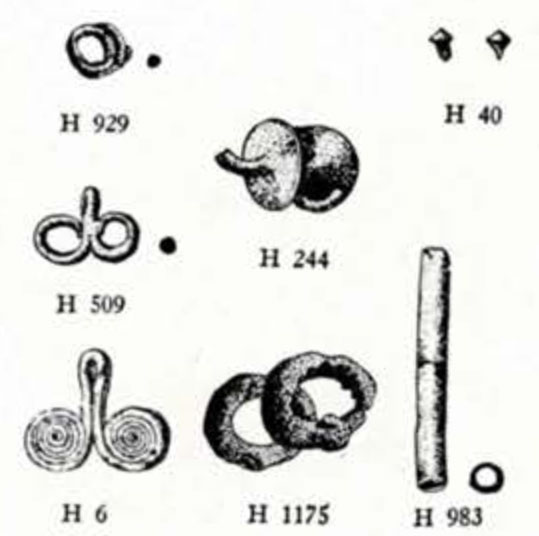
Image Number: 83608
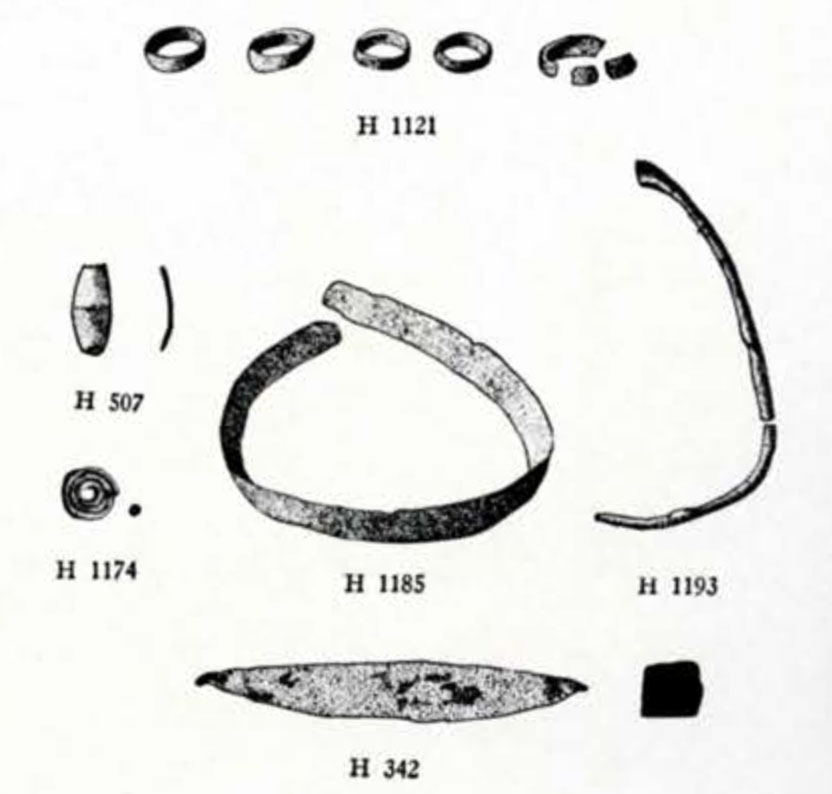
Image Number: 83609
The End of Period II
Certain guide forms of pottery vessels and metal implements define Stratum II. Certain pot forms, metal tools and weapons, alabaster vessels as a whole, elaborate copper seals and the like, occur only in Stratum But there are quite a number of pottery vessels and other objects which we cannot definitely attribute to one or the other stratum. We have, thus, not found a definite break between the two archaeological periods, and we assume for the present that the people of Period III developed and elaborated the culture products of their ancestors from the north, and, at the same time, adopted certain features from their contemporaneous neighbours. At any rate the archaeological situation suggests that Period II faded into Period III.
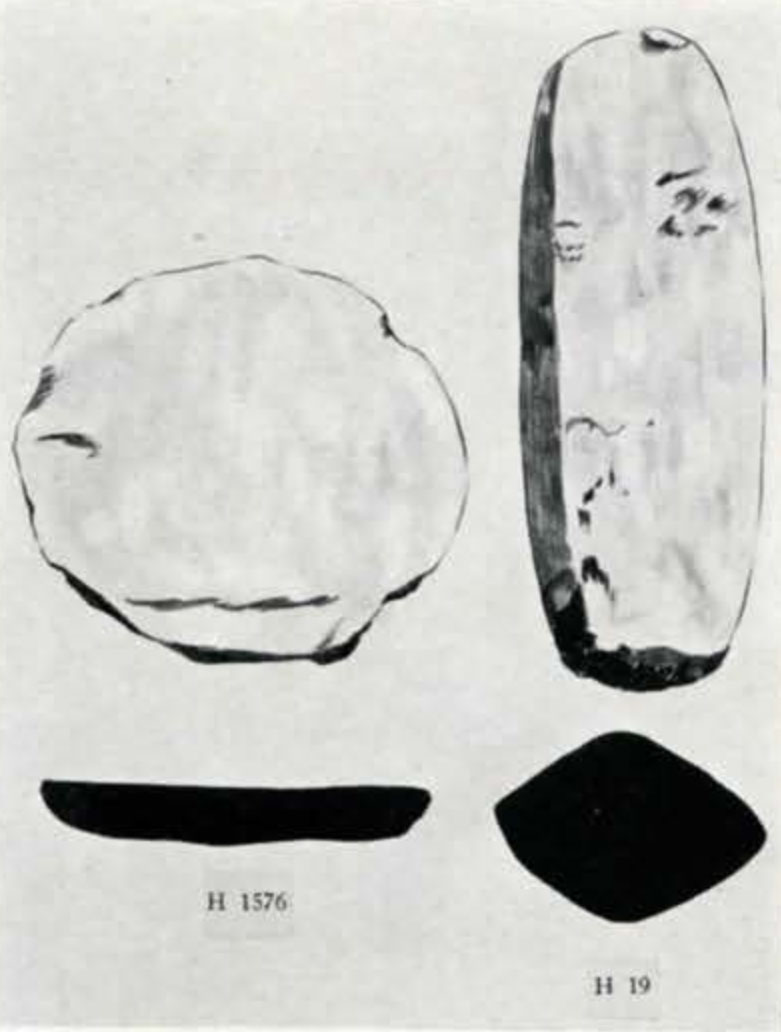
Image Number: 83611

Image Number: 83612
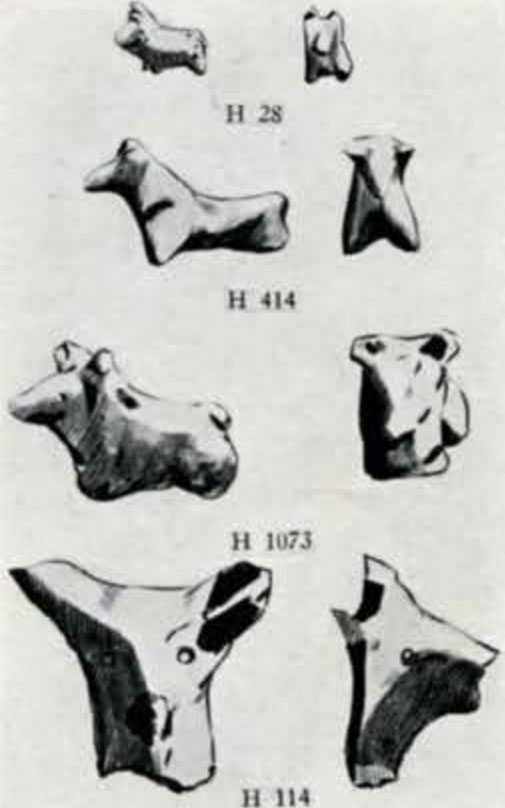
Image Number: 83610
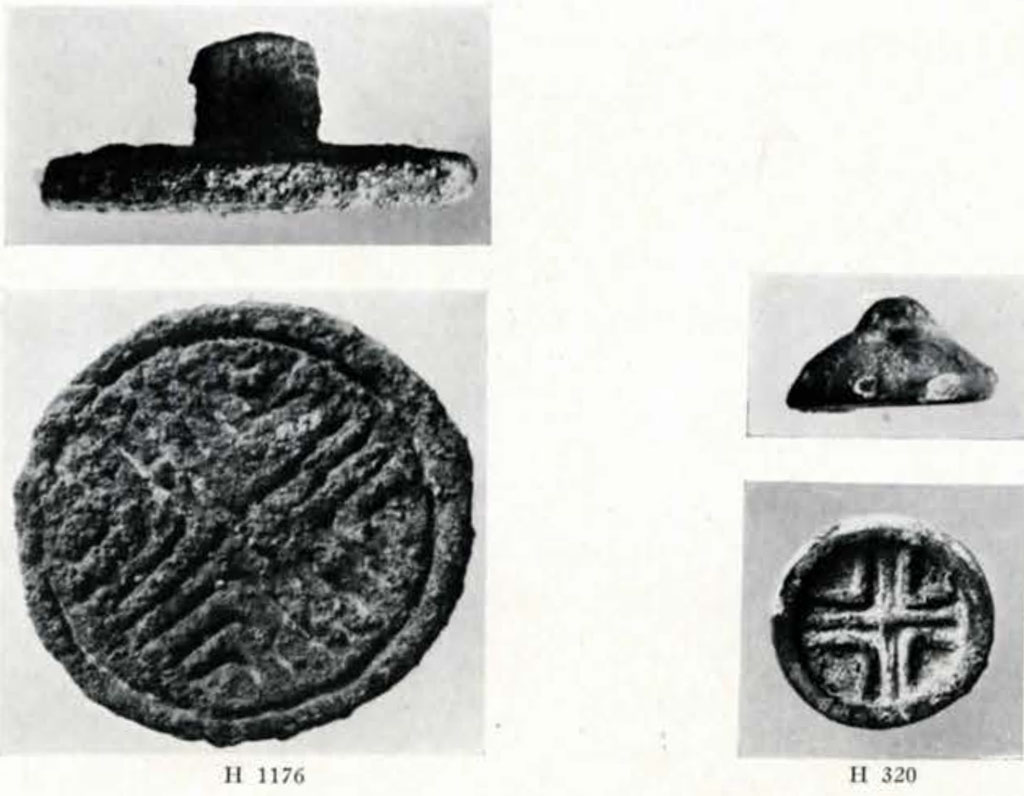
Image Numbers: 83229, 83230
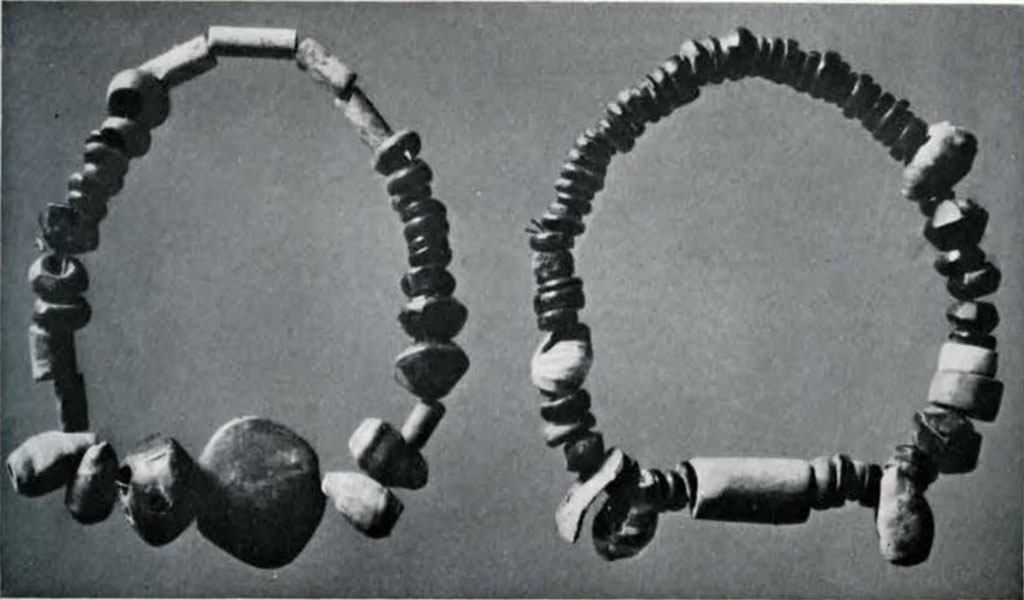
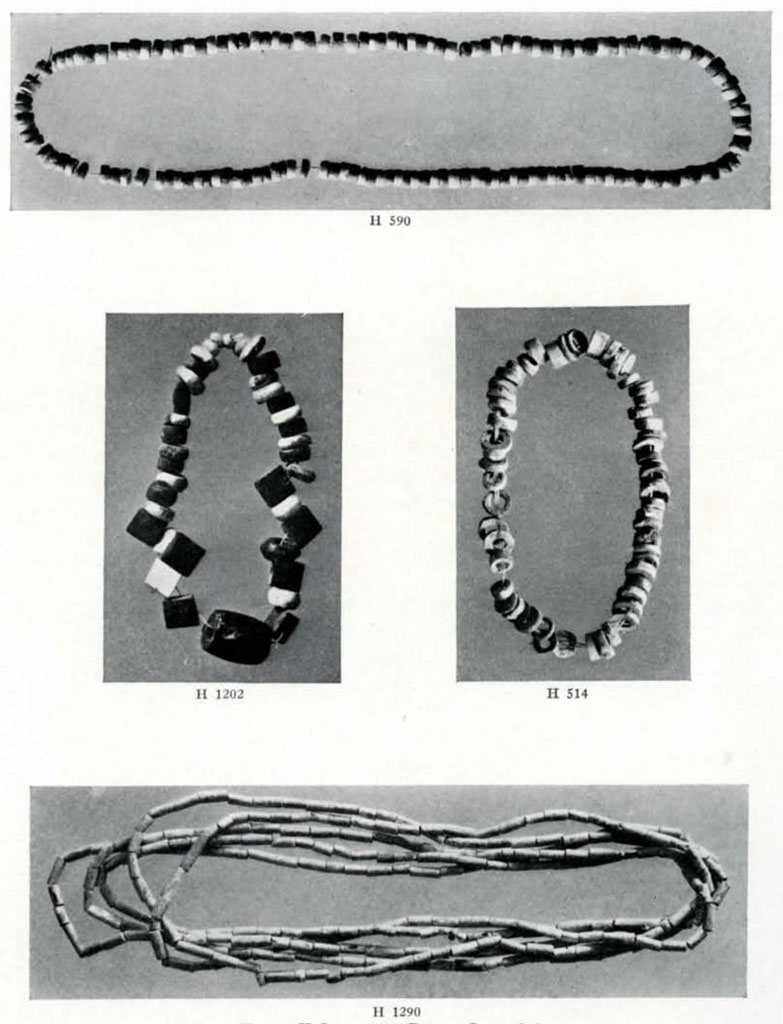
Image Numbers: 83240-83252
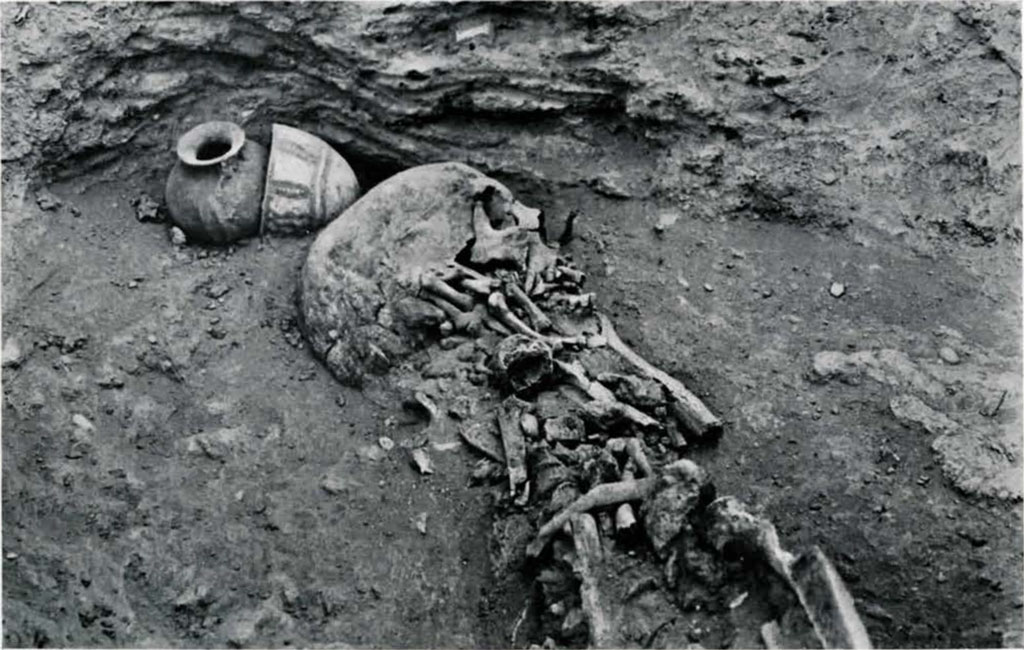

Image Number: 84529, 83037
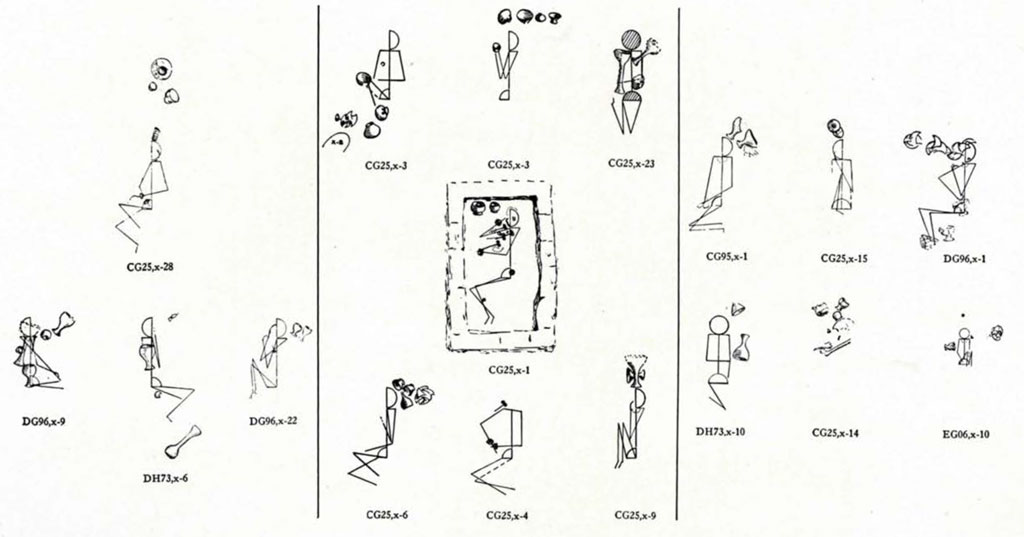
7 Cf. Excavations at Tureng Tepe, near Asterabad. Bull Amer. Inst. for Persian Art and Archaeology, Vol. 2, No. 1 bis, March, 1932. ↪

